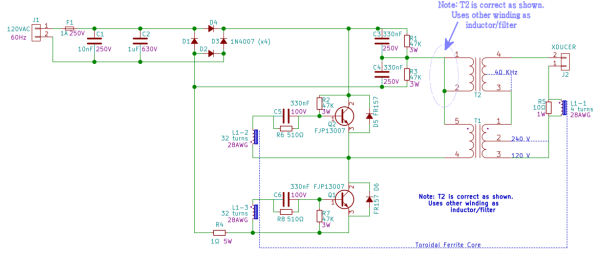The reason we can feed six or seven billion people isn’t GMOs. It’s the massive increase in the use of fertilizers over the past hundred years. Most of the nitrogen-based fertilizers are produced using the Bosch-Haber process, a bit of chemical engineering that consumes one percent of all energy worldwide.
For his entry in the Hackaday Prize this year, [Peter Walsh] is improving the Bosch-Haber process, making the production of nitrogen simpler with less equipment.
The Bosch-Haber process runs at temperatures 400°C and pressures of about 200 atmospheres. Right now, this process is run in huge pressure vessels. [Peter]’s idea is to use ultrasonic cavitation to produce the same environment in equipment that can sit safely on a workbench.
[Peter]’s idea is inspired by sonoluminescence, a phenomenon seen when tiny bubbles in water implode producing light. It’s estimated that pressures and temperatures inside these imploding bubbles reach 2000 atmospheres and 5000°C – more than enough for the Bosch-Haber process. By injecting hydrogen and nitrogen into a machine that creates these sonoluminescent bubbles, ammonia will be created and turned into fertilizers to feed the planet.
















